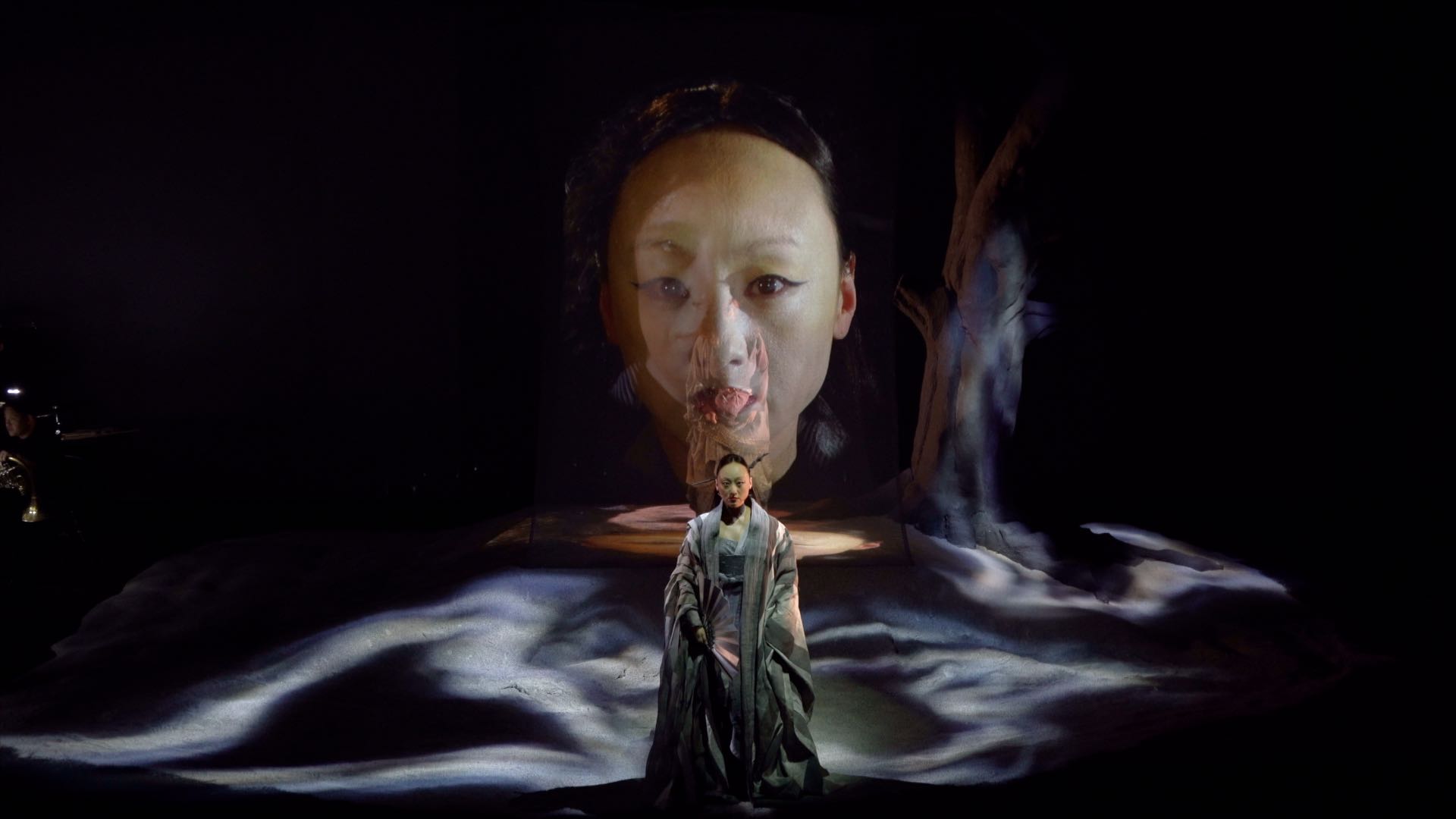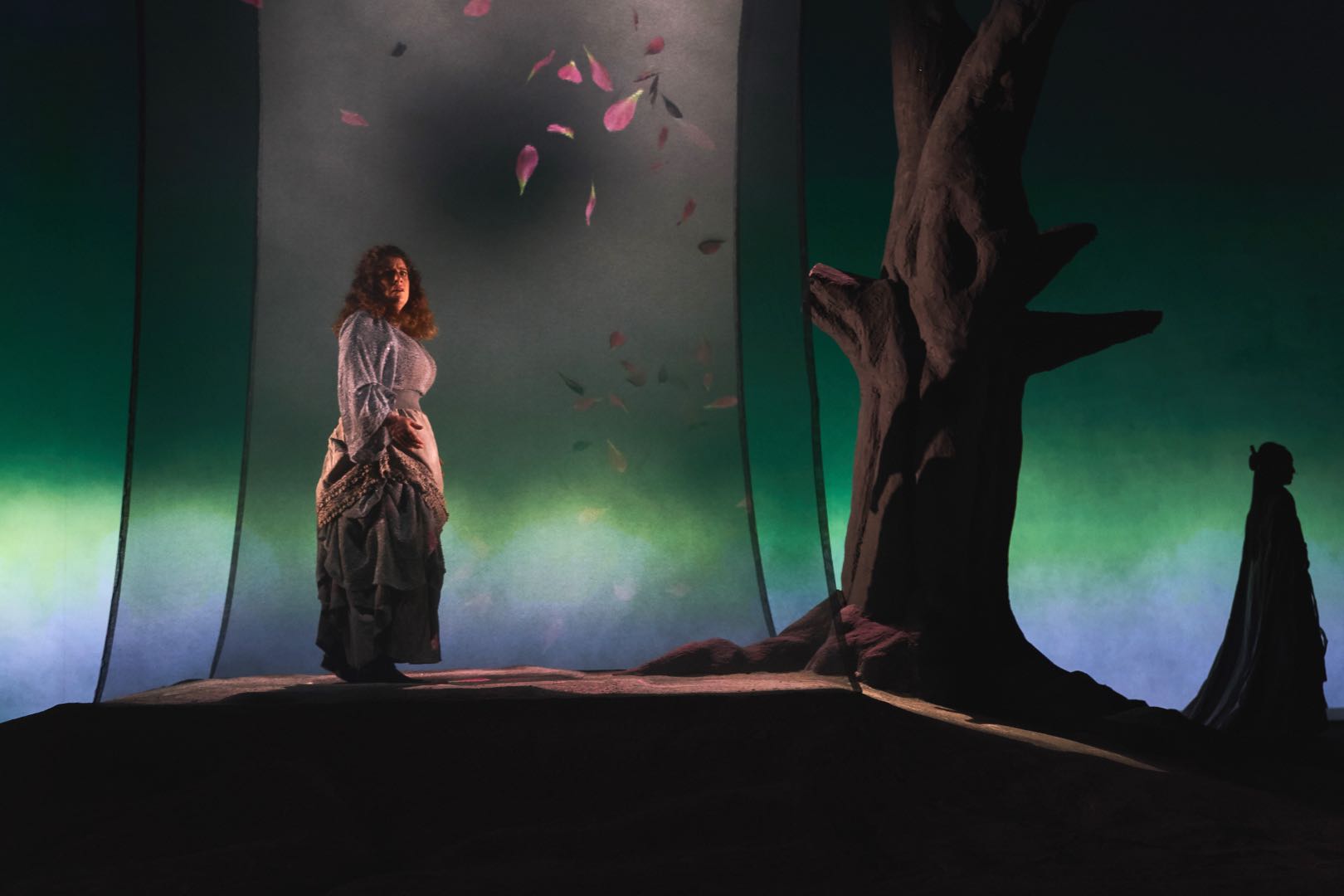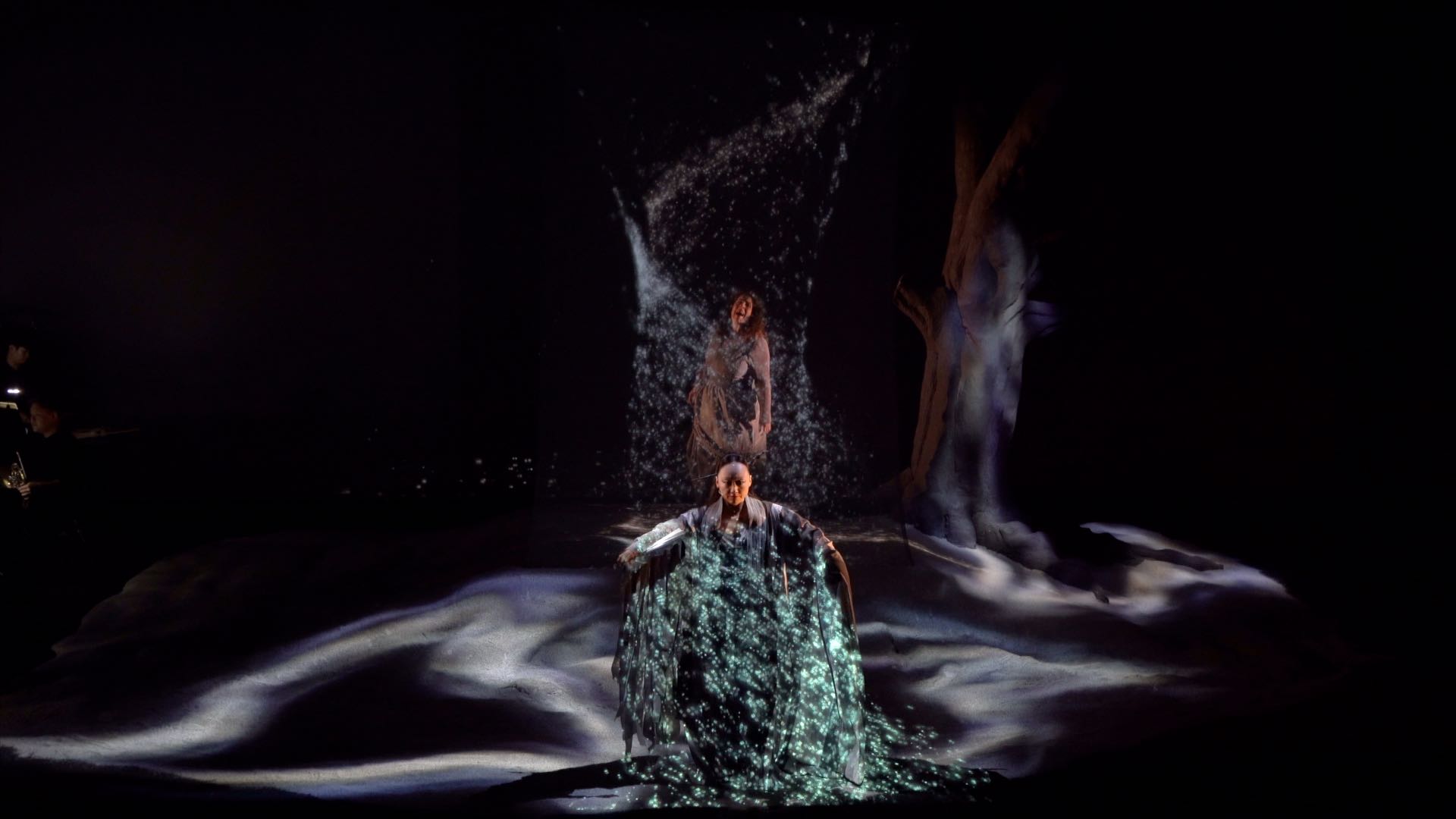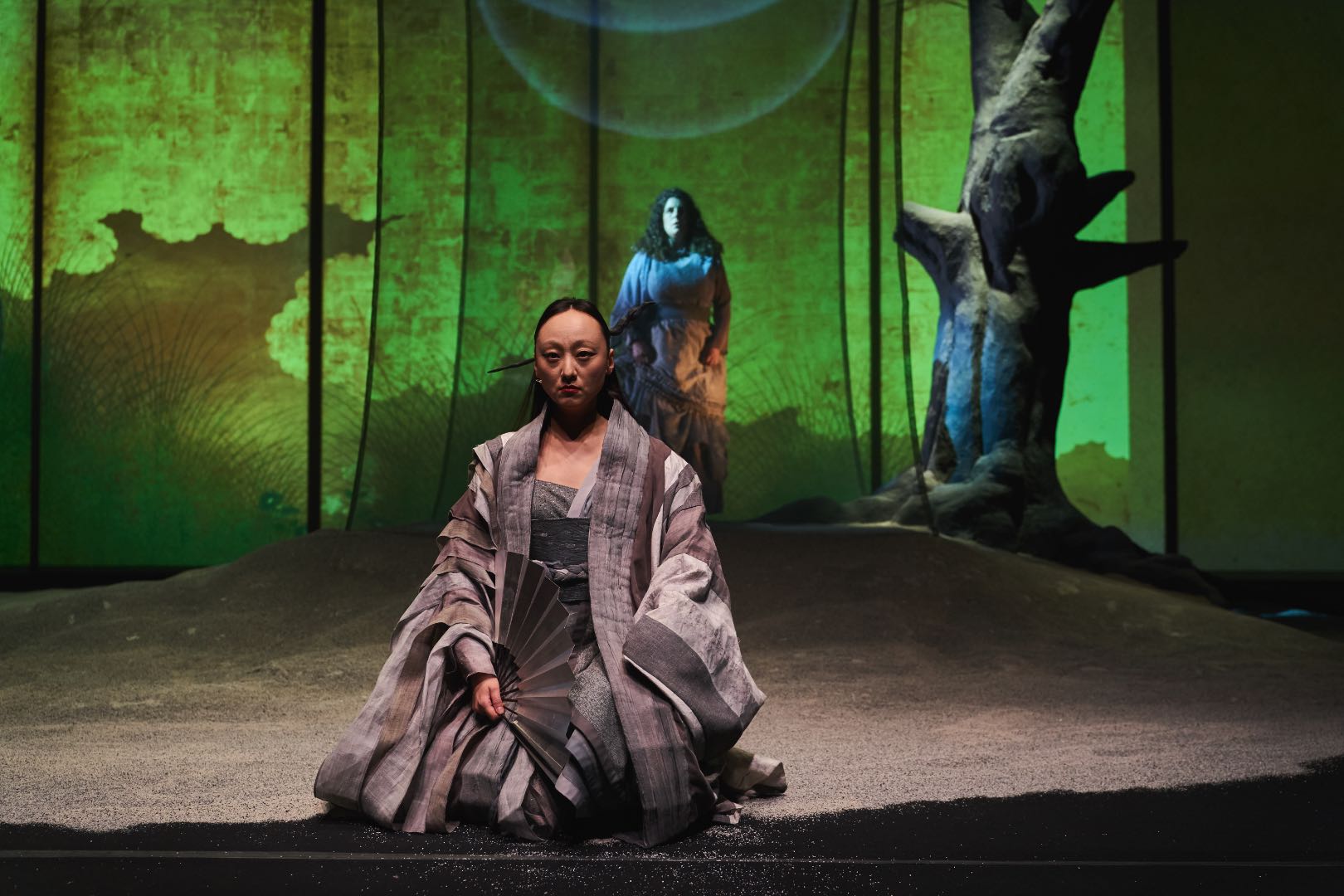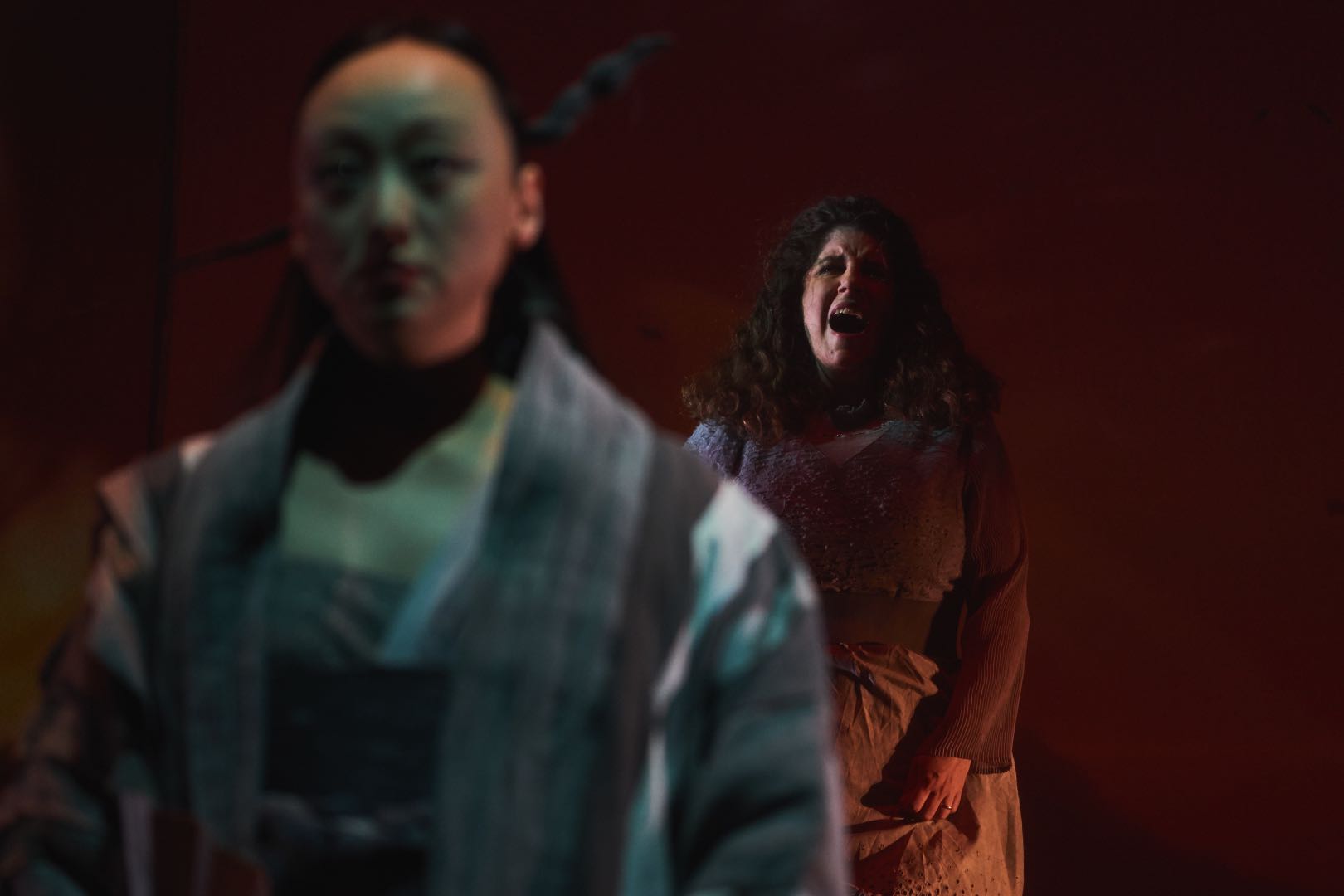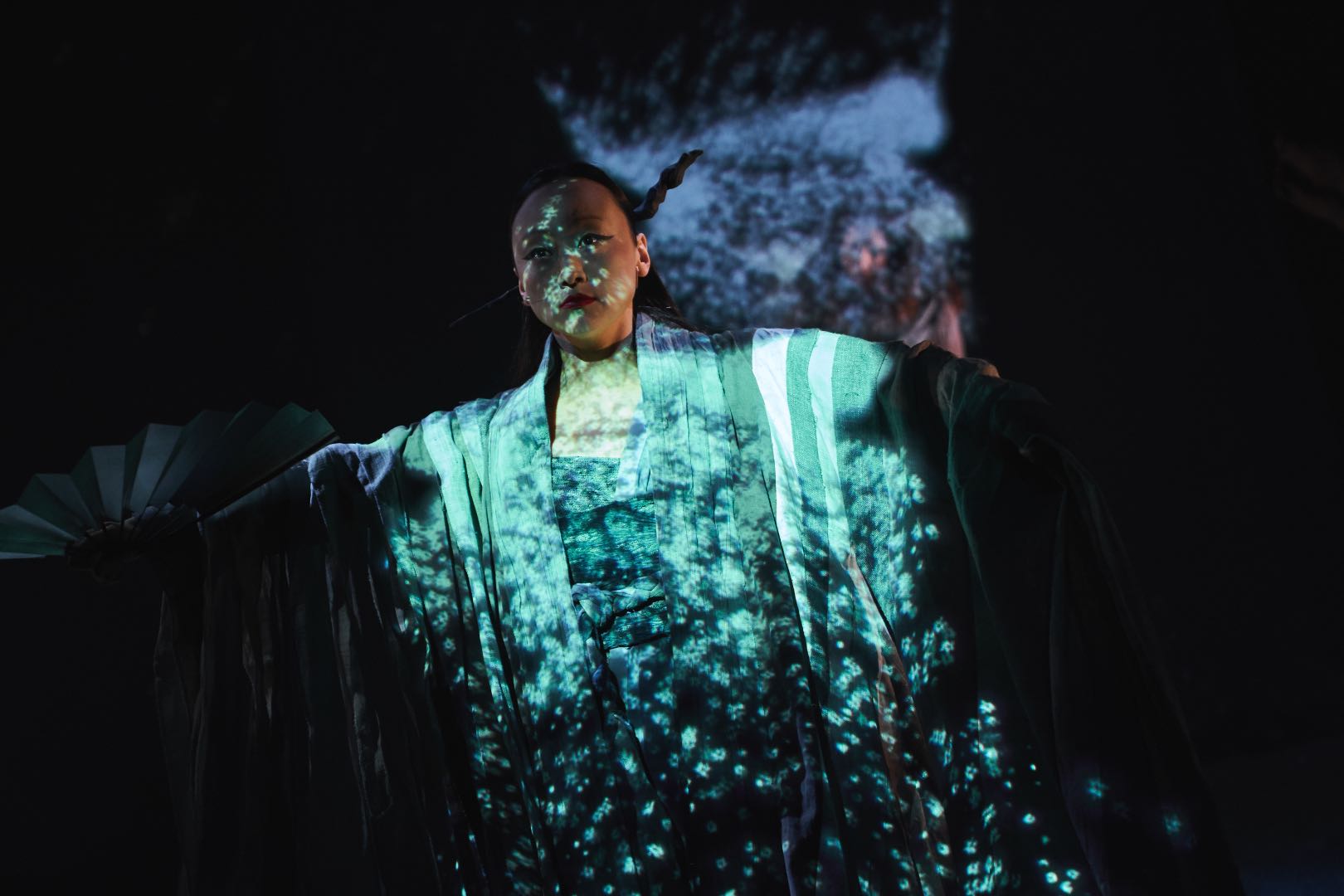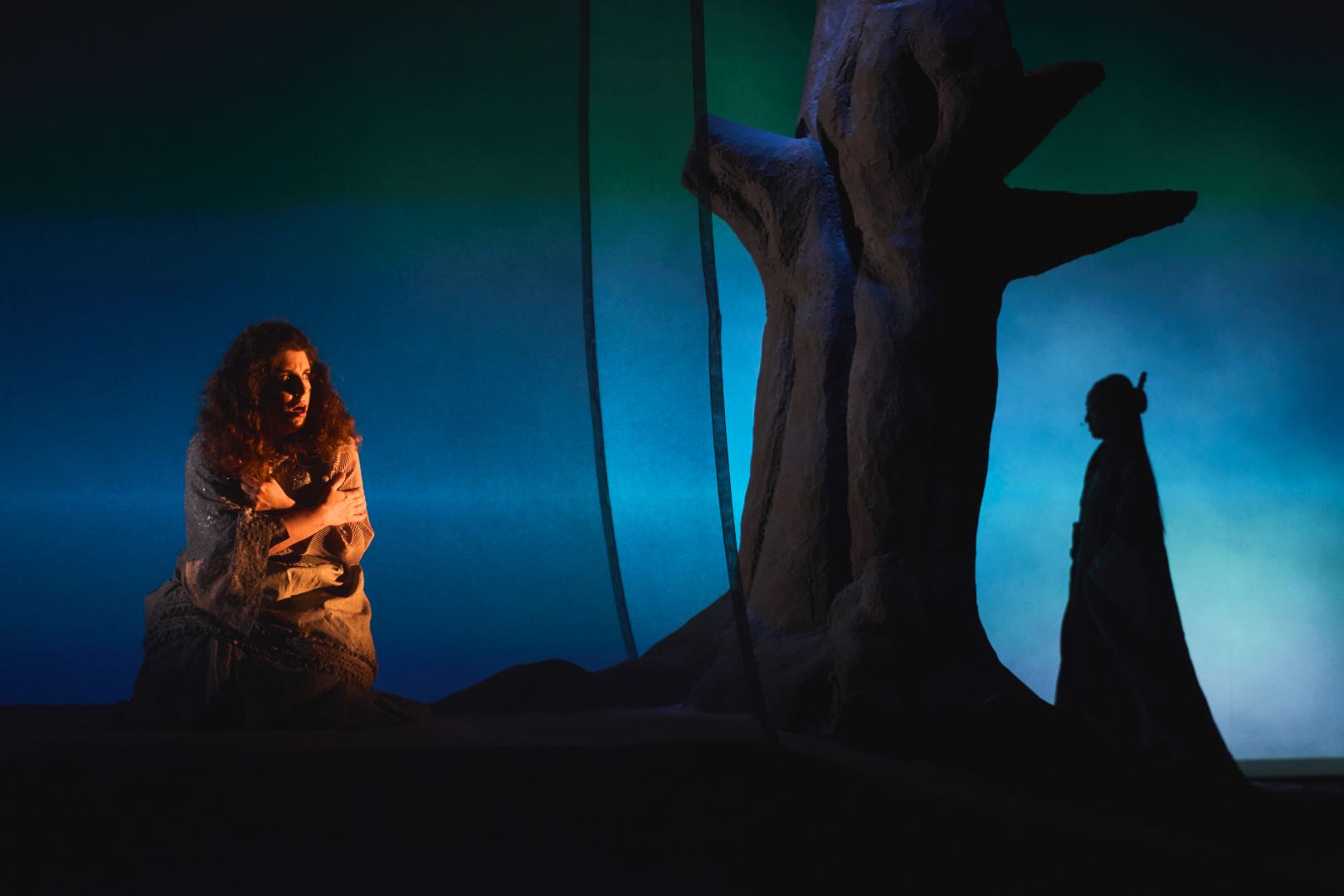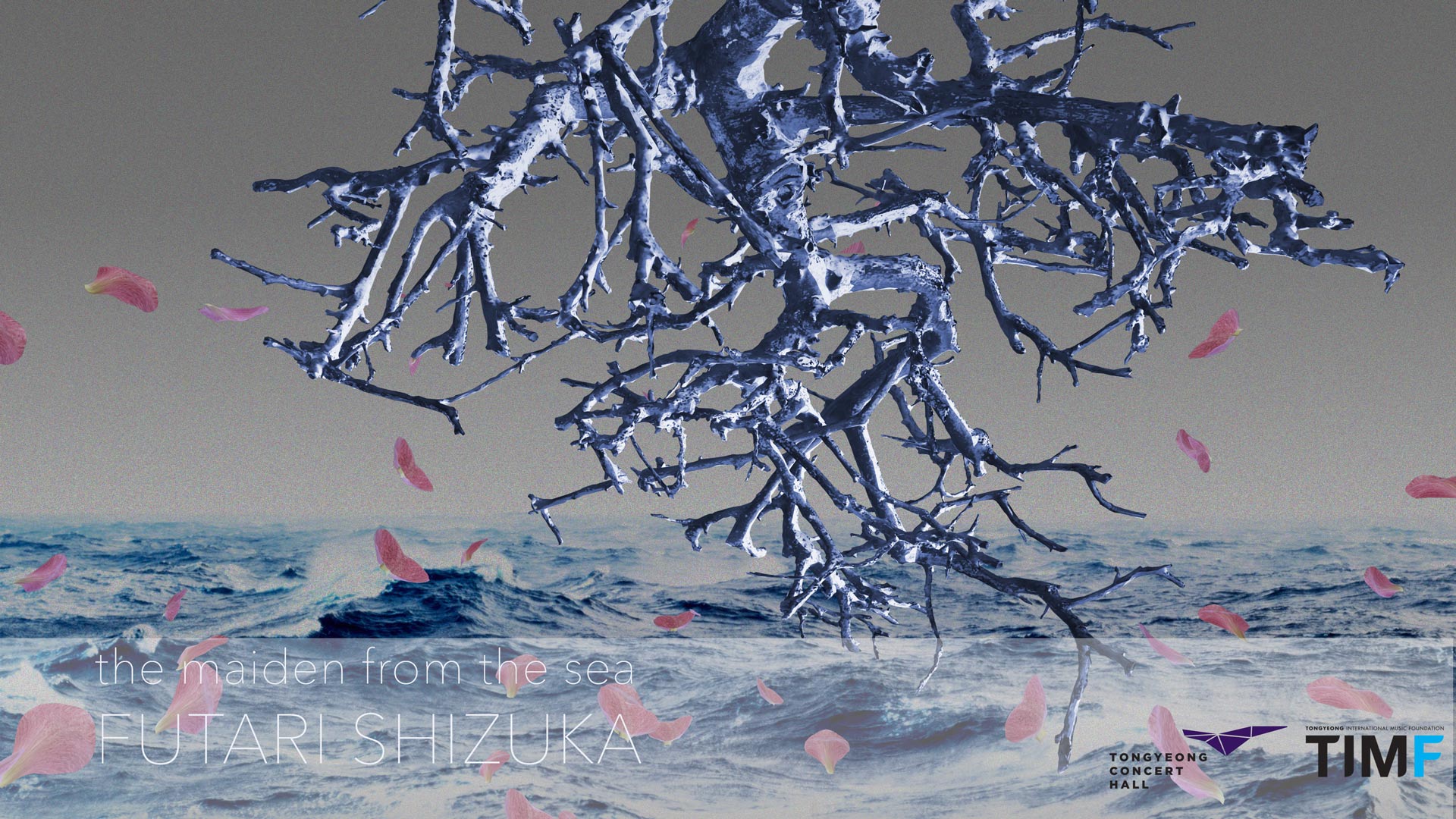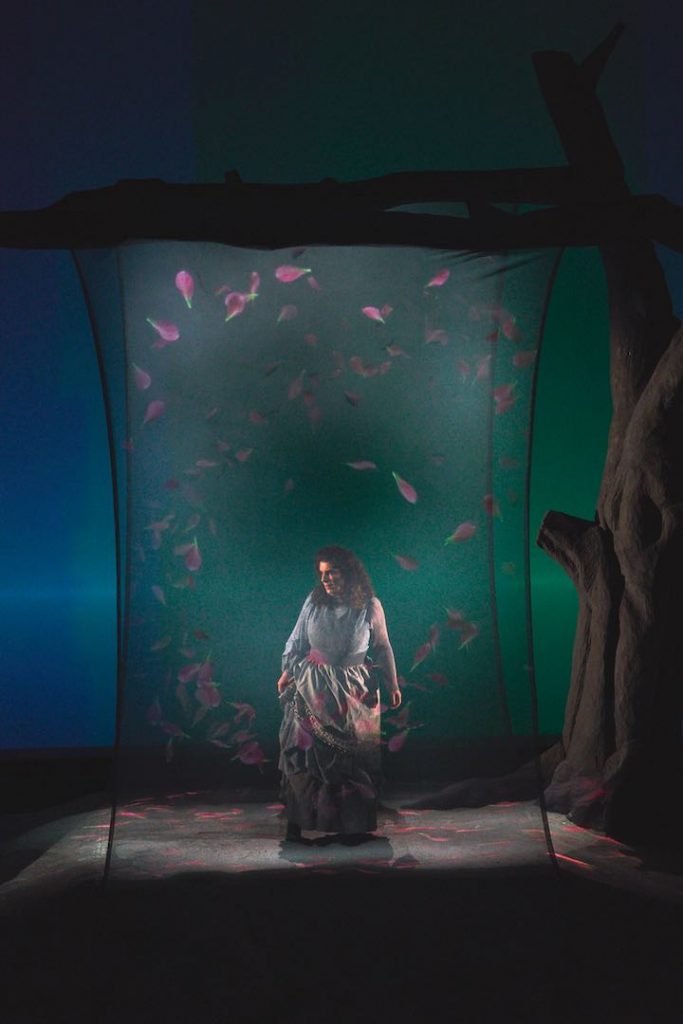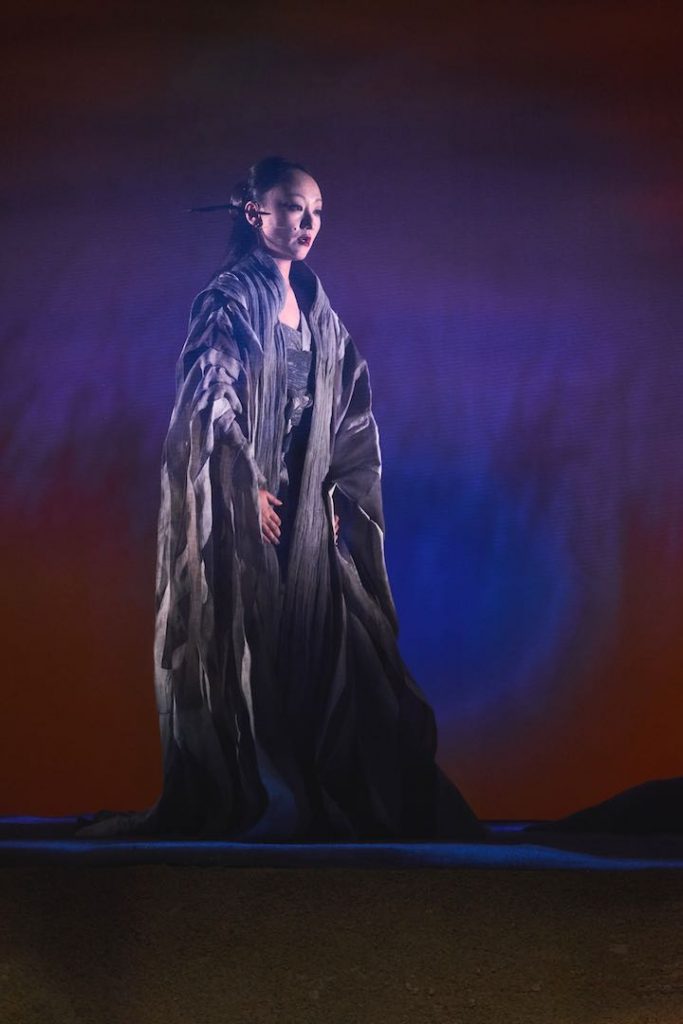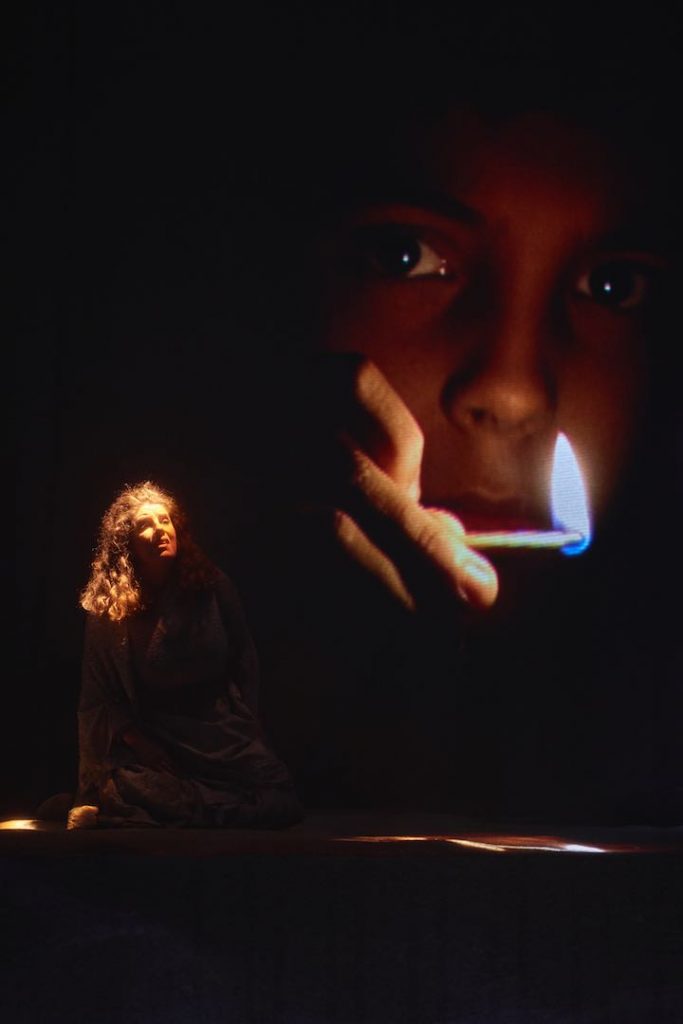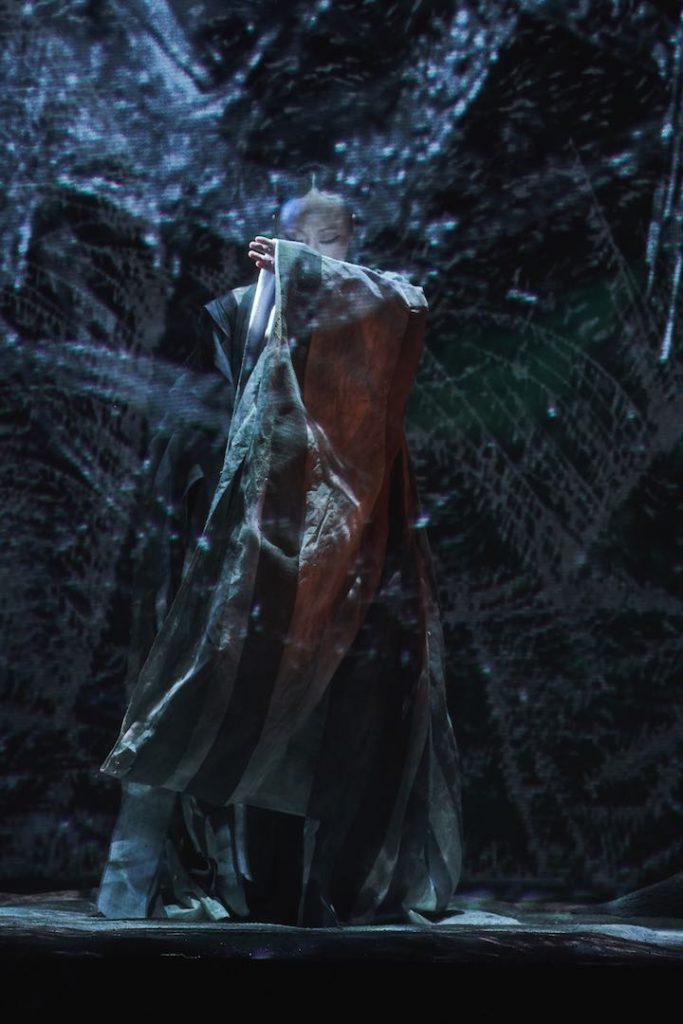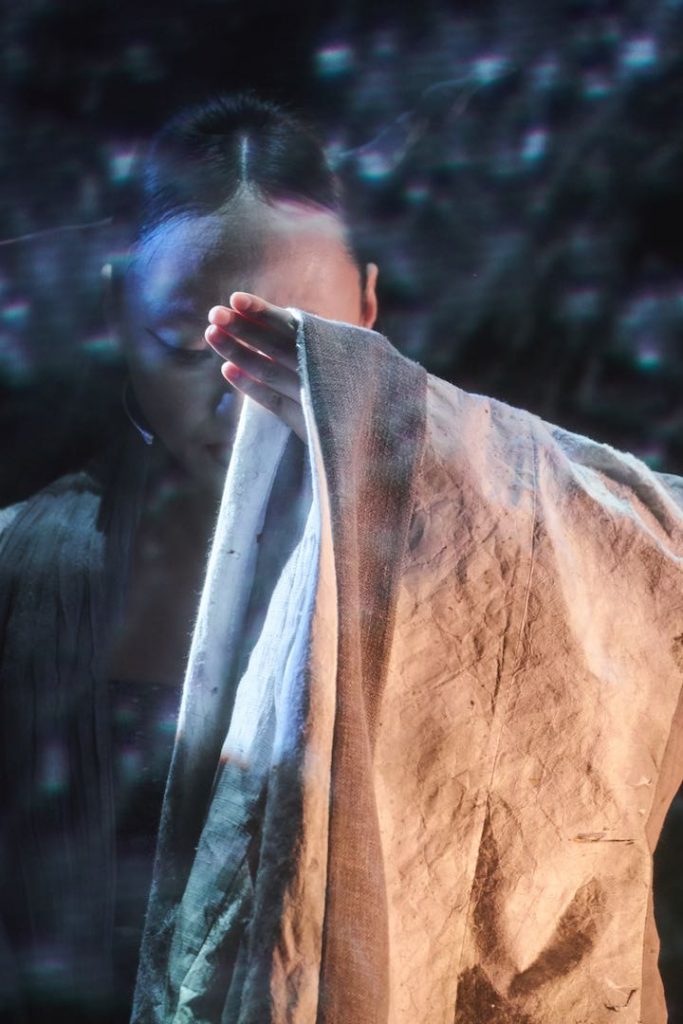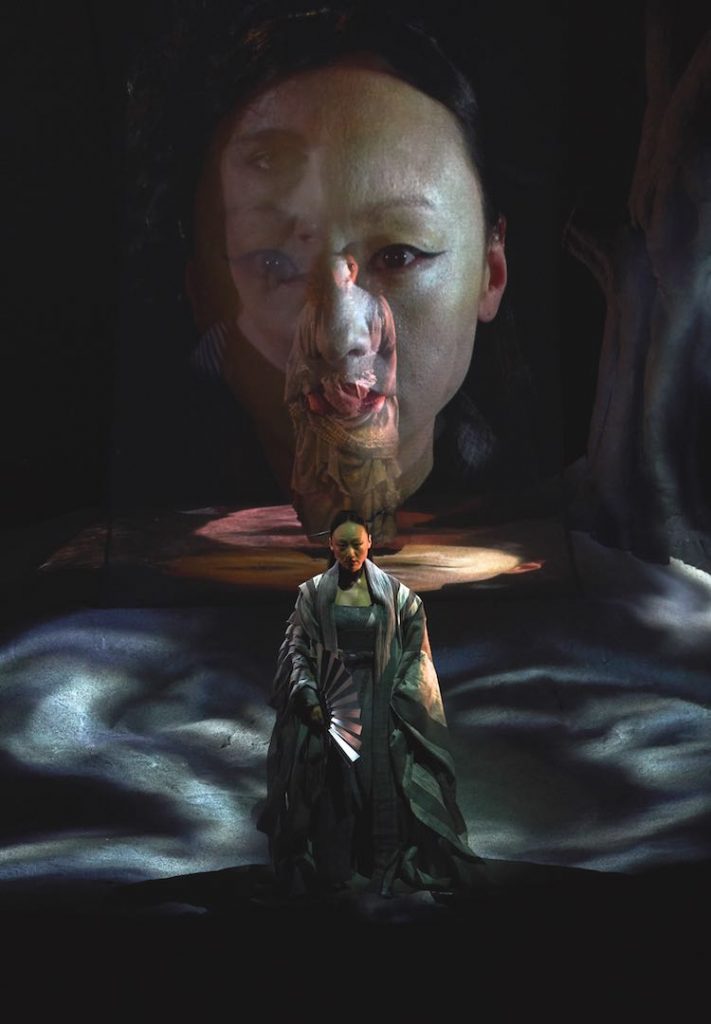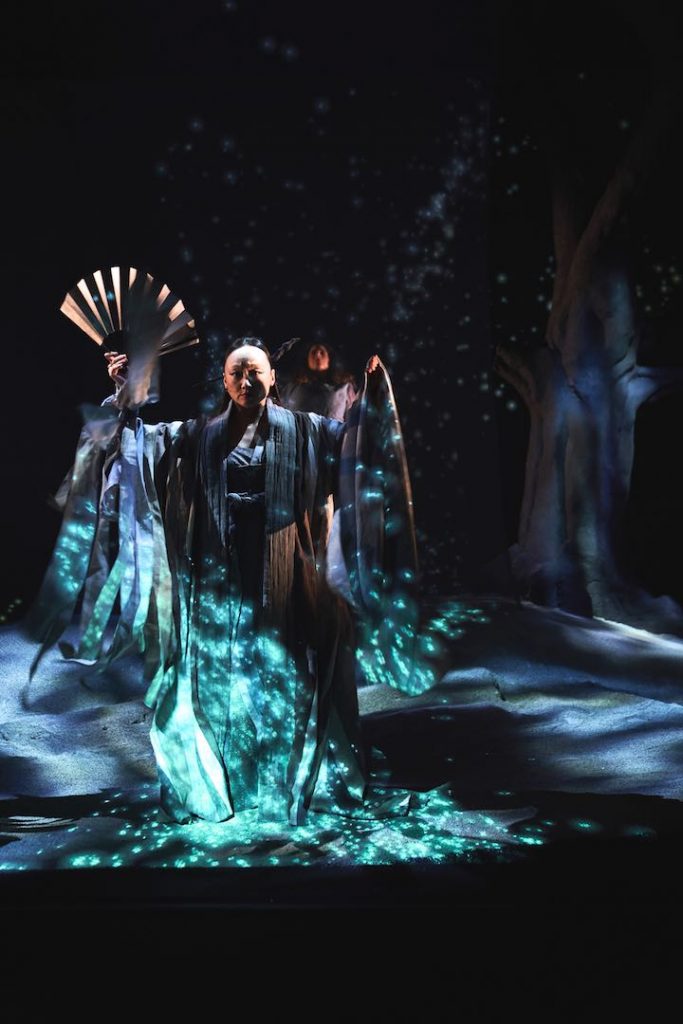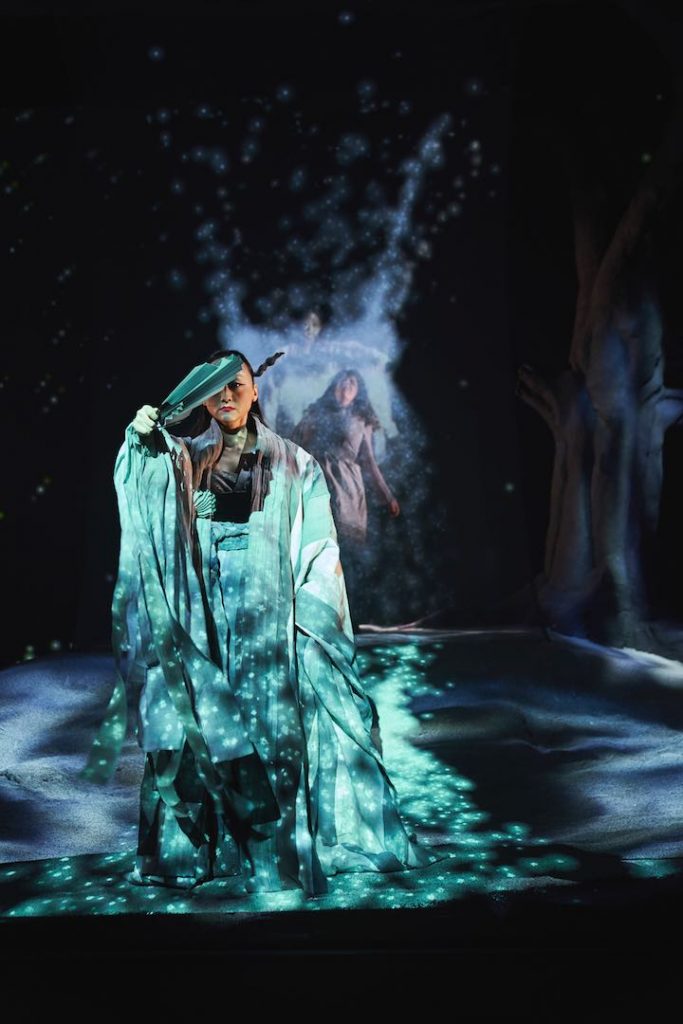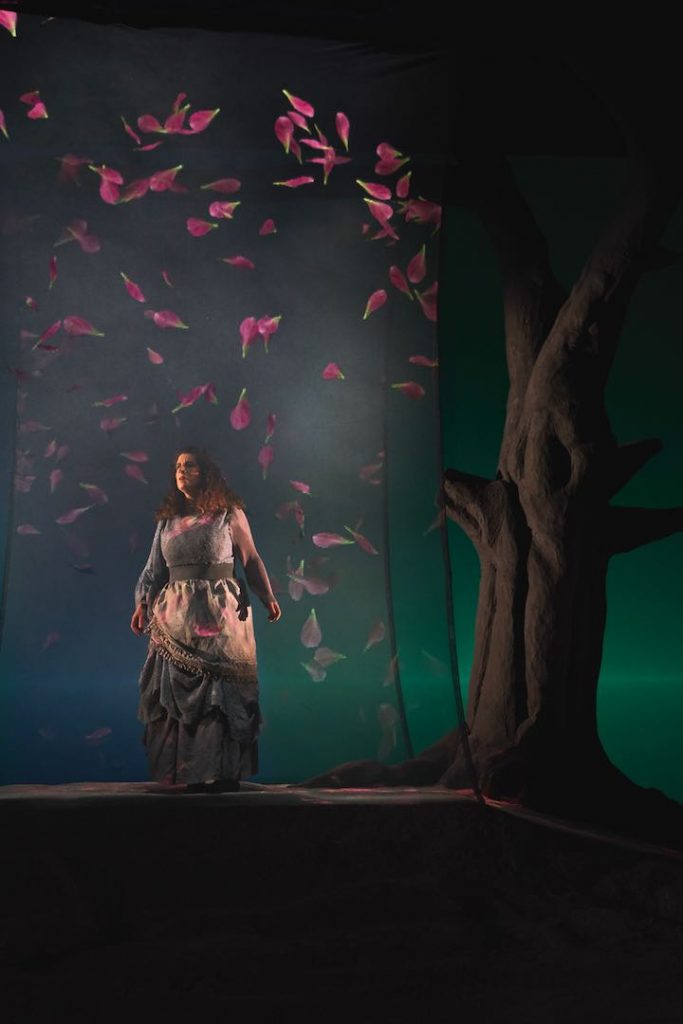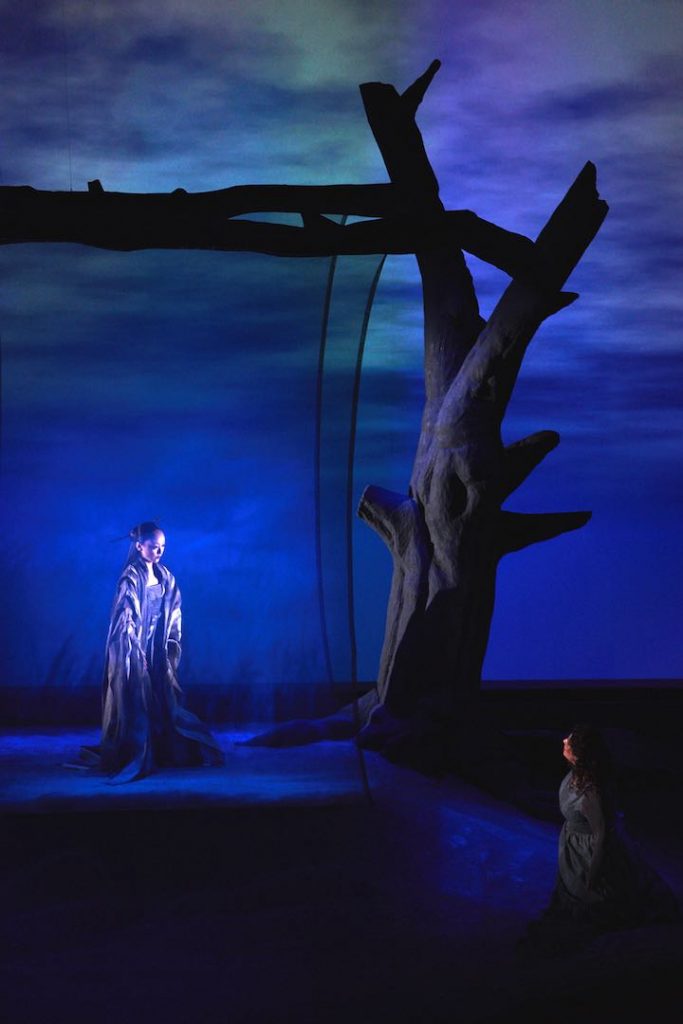Opera: Toshio Hosokawa
Director – stage & video design: Thomas Israel
Conductor: Shiyeon Sung
When
2019
Where
”“The time of the Noh is the time of the impossible separation, this separation which is overcome by the power of memory. Strength of memory which is strength of love, a love able to create the space of a meeting in this strange ‘in-between’ space.”
Monique Borie “Le fantôme ou le Théâtre qui doute”, Acte Sud, 1997.
Word from the Director
A migrant woman lost on a beach shore meets another woman lost in the snow for 9 centuries. They share a tragic fate, caused by men’s wars, but their encounter might change their paths. This is the unusual premise for this cathartic and trans-historic piece, mixing the codes of Noh Theater and contemporary lyrical opera.
Lady Shizuka’s story is more than 900 years old, but it continues to move us as it is filled with timeless dramatic elements: absolute love beyond death, abandonment, bravery, fratricidal quarrels, unquenchable pain and a quest for liberation. This strong yet abandoned woman who defies authority for love, also questions the status of women.
Each era adapts Lady Shizuka’s story in the light of its preoccupations. The fate of migrants is at the heart of our civilization. It will shape our humanity and pose questions whose answers will forge tomorrow’s societies. Thus, it is important that this question merge here with the drama of Lady Shizuka – despite the centuries between them, the tragedies of these two women expose the fragility of every human civilization.
The space of this opera, like usually in Noh theater, is at the edge, in this “in-between” space where humans can communicate with ghosts. We have dealt with it as it is was the third character of this opera, Its an interactive space that is evolving symbiotically with the music of Toshio Hosokawa.
For Toshio Hosokawa’s latest opera, Oriza Hirata has written a libretto based on the Noh play Futari Shizuka [The Two Shizukas]. In this work, the departed spirit of Shizuka Gozen, or Lady Shizuka, possesses the body and soul of a refugee woman who made it to the Mediterranean Sea, and sings her sorrow for wars and hateful disputes. Lady Shizuka’s story is more than 900 years old, but it continues to move us as it is filled with timeless dramatic elements: absolute love beyond death, abandonment, bravery, fratricidal quarrels, unquenchable pain and a quest for liberation.
This opera is sung in both English and Japanese: the mesmerising German soprano Sarah Wegener plays the part of Helen while the ghost of Lady Shizuka is unbodied by the exceptional Ryoko Aoki, Japanese Noh singer and dancer for whom the part was written.
This first stage creation of the opera, directed by the Belgium multi-media artist Thomas Israel, premiered on March 2019 at the Tongyeong International Music Festival, one of the most important musical events in South Korea. Thomas Israel has been recently in Kanasawa & Tokyo with Marc Minkowski’s interpretation of Pelléas et Mélisande, for which he has contributed with the video stage design. This version of the famous Debussy’s opera was voted third best music event of 2018 by critics in Japan (Ongaku No Tomo Magazine).
For Futari Shizuka, Thomas Israel’s approach was to create a fluid “in-between space” space with multiple video projections that unite several technologies developed specifically for this piece, such as generative video that evolves and reacts symbiotically with the music of Toshio Hosokawa. As a result, the audience is taken into an extraordinary immersive and sensorial experience.
In Futari Shizuka, Western and Eastern traditions meet, mixing the codes of Noh theatre and contemporary opera, in order to give shape to the unique story of the encounter of an ancient Japanese ghost with a present-day refugee.
Full Team:
Opera: Toshio Hosokawa
Libretto:Oriza Hirata
Conductor: Shiyeon Sung
Director – stage & video design: Thomas Israel
With: Ryoko Aoki (Noh Singer & Dancer) & Sarah Wegener (Soprano)
Software & generative video: François Zajéga
Costumes:Mrs Cho Light: Jeonghun Lee
Artistic Assistant: Kika Nicolela Technic video: Antoine Goldschmidt
Additional footage : Abe Abraham On screen: Djair Guilherme, Pedro Guilherme, Dudu Tsuda
